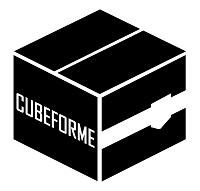
CubeForme: 13 Lessons from a Subscription Box Start-up
Friends since second grade, Nick Nguyen and Kyle Pham started talking about owning a business together in high school. At that time, they thought they might do T-shirts or graphic design featuring a different designer each month. Though the idea would eventually evolve into a subscription box company featuring 3D printed products, owning a business together seemed like a natural fit for the two men. With a similar work ethic and different strengths, they've created what Kyle calls an ideal, coll...
HELLO!
This premium article is exclusively reserved for Subscription Insider PRO members.
Want access to premium member-only content like this article? Plus, conference discounts and other benefits? We deliver the information you need, for improved decision-making, skills, and subscription business profitability. Check out these membership options!
Learn more about Subscription Insider PRO memberships!
Already a Subscription Insider PRO Member?
Please Log-In Here!








